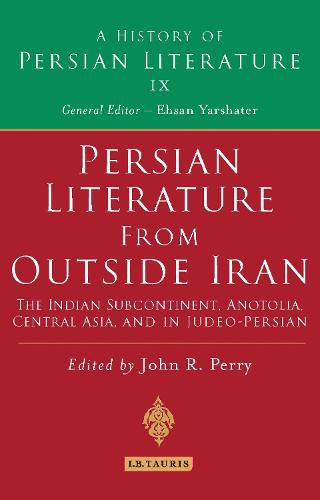Readings Newsletter
Become a Readings Member to make your shopping experience even easier.
Sign in or sign up for free!
You’re not far away from qualifying for FREE standard shipping within Australia
You’ve qualified for FREE standard shipping within Australia
The cart is loading…






After the fall of the Sassanian Empire and with it the gradual decline of Middle Persian as a literary language, New Persian literature emerged in Transoxiana, beyond the frontiers of present-day Iran, and was written and read in India even before it became firmly established in cities such as Isfahan on the Iranian plateau. Over the course of a millennium (ca. 900-1900 CE), Persian established itself as a contact vernacular and an international literary language from Sarajevo to Madras, with Persian poetry serving as a universal cultural cachet for literati both Muslim and non-Muslim. The role of Persian, beyond its early habitat of Iran and other Islamic lands, has long been recognized: European scholars first came to Persian via Turkey and British orientalists via India. Yet the universal popularity of poets such as Sa'di and Hafez of Shiraz and the ultimate rise of Iran to claim the centre of Persian writing and scholarship led to a relative neglect of the Persianate periphery until recently. This volume contributes to the scholarship of the Persianate fringe with the aid of the abundant material (notably in Tajik, Uzbek and Russian) long neglected by Western scholars and the perspectives of a new generation on this complex and important aspect of Persian literature.
$9.00 standard shipping within Australia
FREE standard shipping within Australia for orders over $100.00
Express & International shipping calculated at checkout
After the fall of the Sassanian Empire and with it the gradual decline of Middle Persian as a literary language, New Persian literature emerged in Transoxiana, beyond the frontiers of present-day Iran, and was written and read in India even before it became firmly established in cities such as Isfahan on the Iranian plateau. Over the course of a millennium (ca. 900-1900 CE), Persian established itself as a contact vernacular and an international literary language from Sarajevo to Madras, with Persian poetry serving as a universal cultural cachet for literati both Muslim and non-Muslim. The role of Persian, beyond its early habitat of Iran and other Islamic lands, has long been recognized: European scholars first came to Persian via Turkey and British orientalists via India. Yet the universal popularity of poets such as Sa'di and Hafez of Shiraz and the ultimate rise of Iran to claim the centre of Persian writing and scholarship led to a relative neglect of the Persianate periphery until recently. This volume contributes to the scholarship of the Persianate fringe with the aid of the abundant material (notably in Tajik, Uzbek and Russian) long neglected by Western scholars and the perspectives of a new generation on this complex and important aspect of Persian literature.